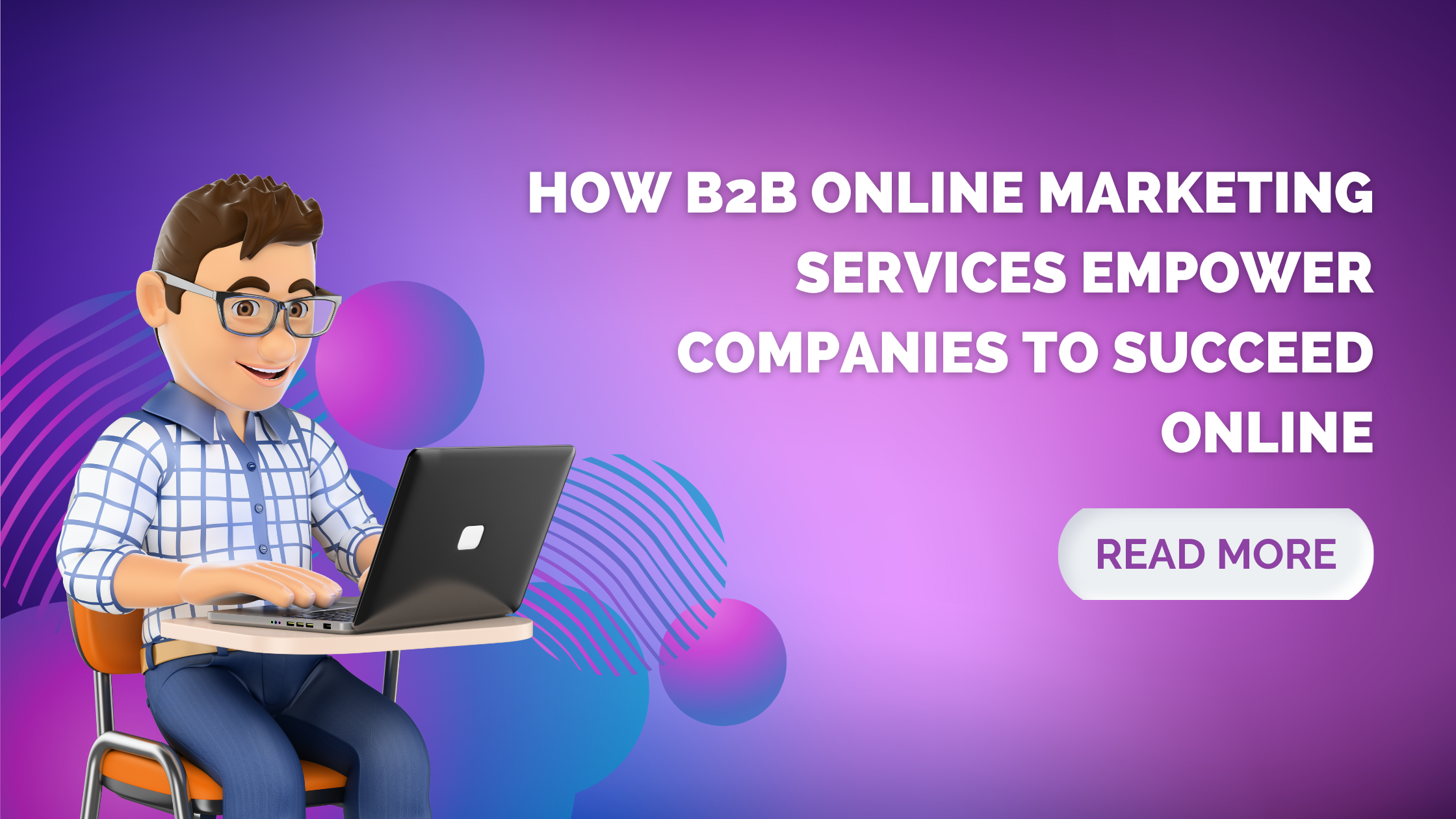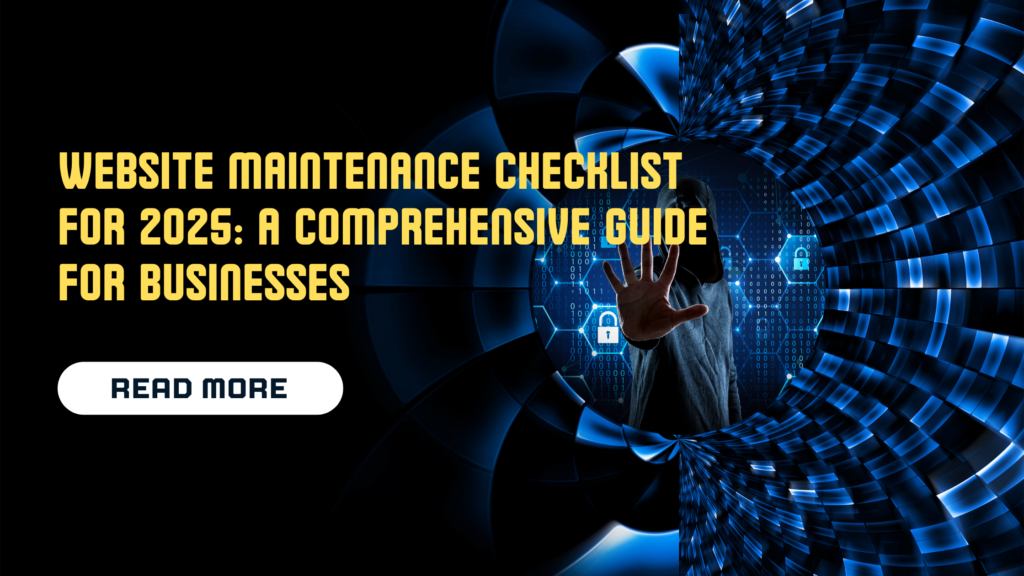
Website Maintenance Checklist for 2025: A Comprehensive Guide for Businesses
In the fast-paced world of digital business, a website serves as the foundation for success. Whether you’re running an e-commerce store, a service-based business, or a personal blog, maintaining a high-performing website is crucial for staying competitive, secure, and relevant.
Regular website maintenance not only ensures that your site remains up-to-date but also enhances security, performance, and SEO rankings. In 2025, staying proactive with updates, security patches, content refreshes, and performance checks is more critical than ever.
Update Software, Plugins, and Themes
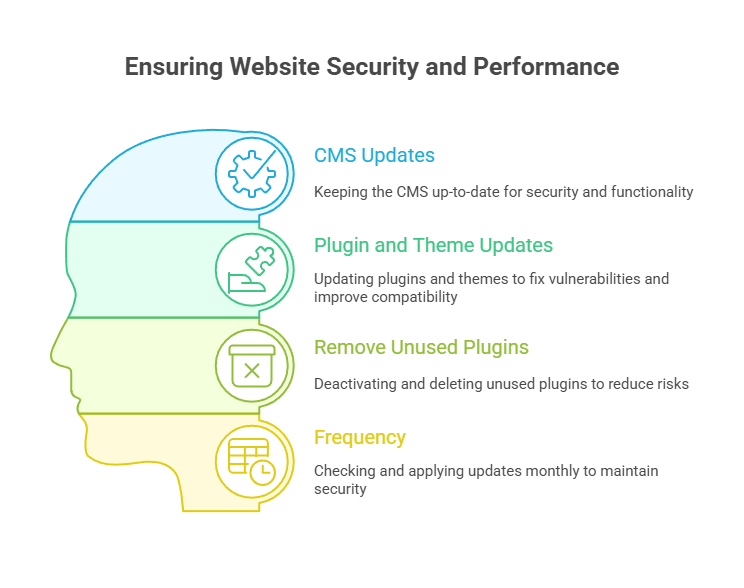
1. Why It Matters
Outdated software, plugins, and themes are some of the most significant security vulnerabilities on your website. As cyber threats become more sophisticated, regular updates ensure that your site has the latest security patches, bug fixes, and performance improvements. This is essential for both the integrity of your site and for keeping it compliant with search engine standards.
2. What to Do
- CMS (Content Management System) Updates: Ensure your CMS (e.g., WordPress, Shopify, Joomla) is updated to the latest version.
- Plugin and Theme Updates: Regularly update all installed plugins and themes. These updates fix known security vulnerabilities and improve compatibility with newer technologies.
- Remove Unused Plugins: Deactivate and delete any plugins or themes that are no longer in use to reduce the risk of conflict and security holes.
3. Frequency
- Monthly: Check for updates and apply them as necessary.
Run Security Audits
1. Why It Matters
Security is a top priority for all websites in 2025. With cyber threats constantly evolving, maintaining a secure website prevents data breaches, malware infections, and hacking attempts. A compromised website can lead to severe consequences, including loss of revenue, customer trust, and SEO penalties. Regular security audits help to detect vulnerabilities before they can be exploited.
2. What to Do
- Security Plugins: Install and use reliable security plugins (e.g., Wordfence, Sucuri) to scan for malware and vulnerabilities.
- SSL Certificates: Ensure that your SSL certificate is up to date for secure browsing (HTTPS).
- Backup Solutions: Use backup plugins like UpdraftPlus to regularly back up your website’s data.
- Two-Factor Authentication (2FA): Enable 2FA for admin accounts to prevent unauthorized logins.
- Malware Scans: Run regular scans to identify potential malware or hacking attempts.
3. Frequency
- Monthly: Conduct a full security audit, scanning for vulnerabilities, malware, and other threats.
Back Up Your Website
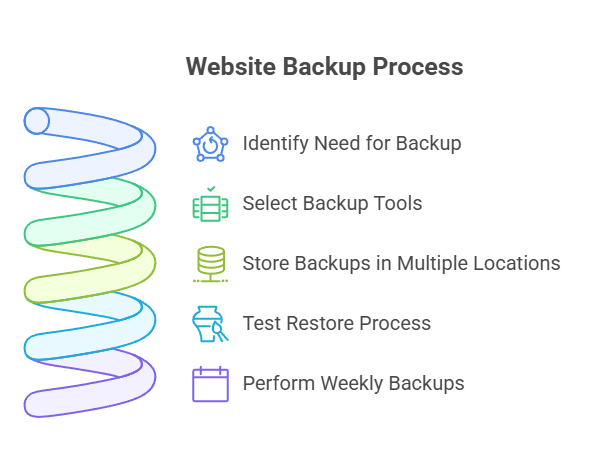
1. Why It Matters
Website backups are critical for restoring your site in the event of a crash, data loss, or security breach. Without a proper backup system, recovering from a website disaster can be both costly and time-consuming.
2. What to Do
- Backup Tools: Use reliable backup plugins like UpdraftPlus or BackupBuddy for automatic backups.
- Multiple Storage Locations: Store backups in multiple locations, such as cloud storage and external drives, to ensure redundancy.
- Test Restore Process: Periodically test your backup restore process to ensure it works when needed.
3. Frequency
- Weekly: Perform automated backups of your entire website.
Test Website Performance and Speed
1. Why It Matters
A slow website not only frustrates users but also leads to higher bounce rates, poor user experience, and reduced SEO rankings. Without proper website maintenance, these issues can become even more severe, as outdated code, unoptimized images, and neglected updates slow down performance. Google’s Core Web Vitals now take performance into account when ranking pages, making site speed and ongoing website maintenance even more crucial in 2025.
2. What to Do
- Image Optimization: Compress large images using tools like TinyPNG or ImageOptim to reduce page load time.
- Minify CSS/JS Files: Minify and combine CSS and JavaScript files to improve load speed.
- Enable Caching: Set up caching systems to improve site performance and reduce server load.
- Content Delivery Network (CDN): Use a CDN like Cloudflare to speed up content delivery to global users.
- Check Speed: Use tools like Google PageSpeed Insights, GTmetrix, and Pingdom to analyze page speed.
3. Frequency
- Monthly: Test the speed and performance of your website and implement optimizations as needed.
Check for Broken Links and Errors
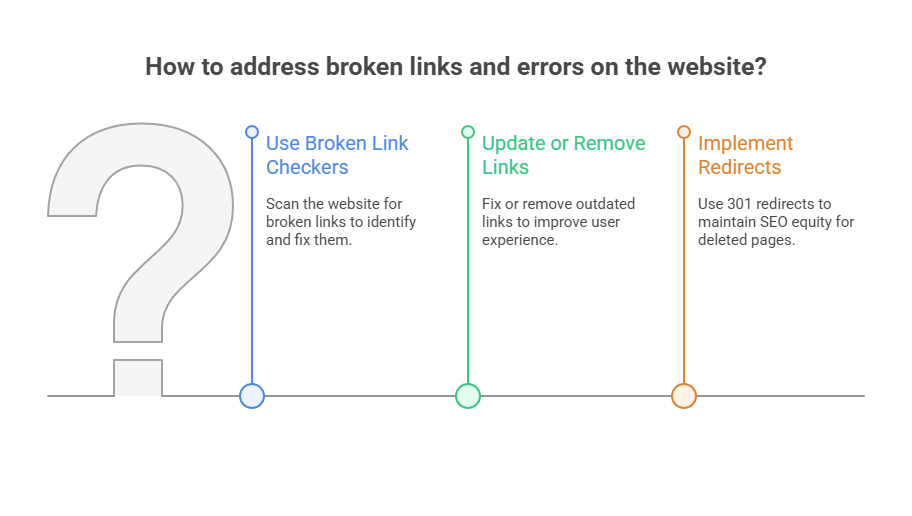
1. Why It Matters
Broken links and errors on your website degrade the user experience and harm SEO. Google’s search algorithms penalize websites with a high number of broken links or 404 errors, impacting rankings.
2. What to Do
- Broken Link Checkers: Use tools like Screaming Frog or Ahrefs to scan your website for broken links.
- Update or Remove Links: Fix or remove outdated or broken internal and external links.
- Redirects: Implement proper 301 redirects for any deleted pages to maintain SEO equity.
3. Frequency
- Monthly: Run a scan for broken links and resolve any issues.
Update Website Content
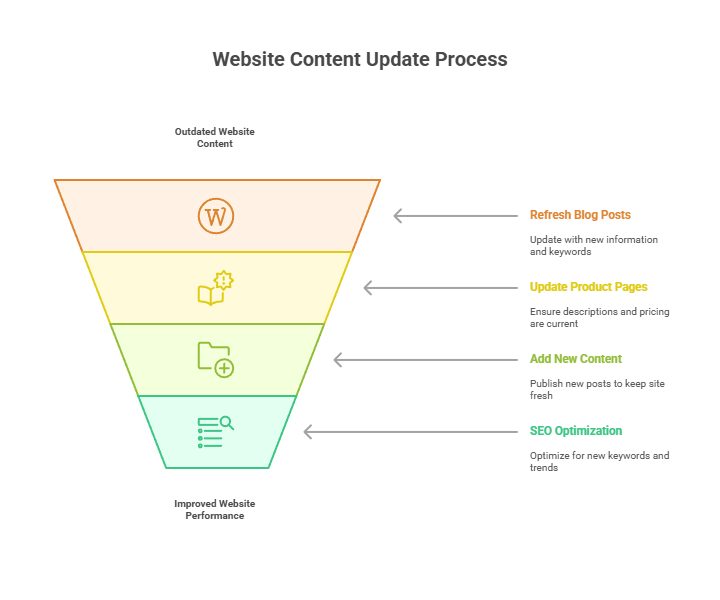
1. Why It Matters
Content that is outdated can negatively impact both your users and SEO. Fresh, relevant content improves search engine rankings and attracts more visitors. Keeping your content updated also shows visitors that your website is active and current.
2. What to Do
- Blog Updates: Refresh old blog posts with new information, statistics, and keywords.
- Service/Product Pages: Update product descriptions, pricing, and availability information.
- Add New Content: Publish new blog posts or articles to keep your site fresh and engaging.
- SEO Review: Optimize content for new keywords and SEO trends.
3. Frequency
- Ongoing: Regularly update blog posts, product pages, and key content sections.
Perform Technical SEO Audits
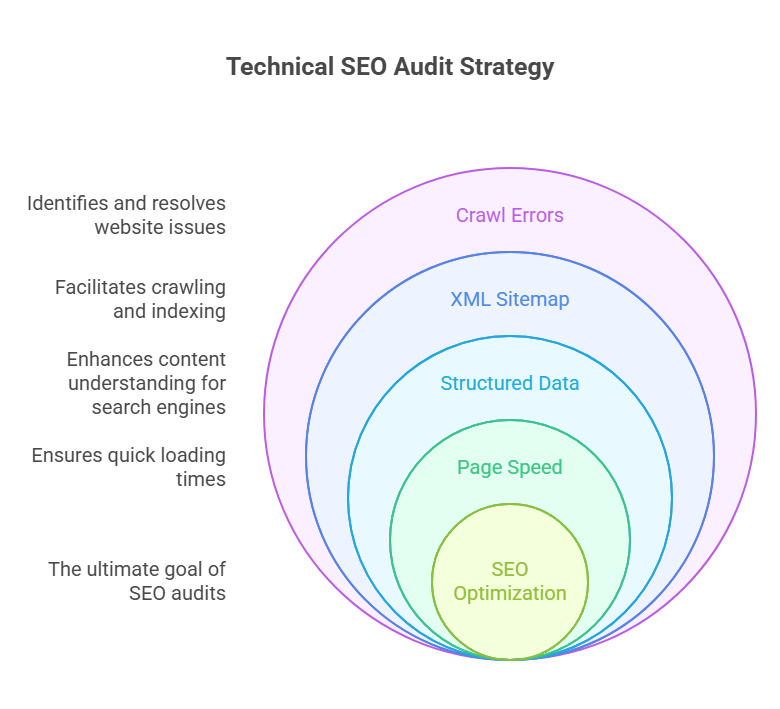
1. Why It Matters
SEO is an ongoing effort that requires regular attention to ensure that your website remains optimized for search engines. Technical SEO audits help identify issues that could negatively impact your site’s ranking.
2. What to Do
- Crawl Errors: Check Google Search Console for crawl errors and resolve them promptly.
- XML Sitemap: Ensure your XML sitemap is up to date and submitted to Google Search Console.
- Structured Data: Implement schema markup to help search engines understand your content better.
- Page Speed: Ensure your website’s page load time is fast to meet Core Web Vitals requirements.
3. Frequency
- Quarterly: Conduct a full technical SEO audit.
Monitor Uptime and Availability
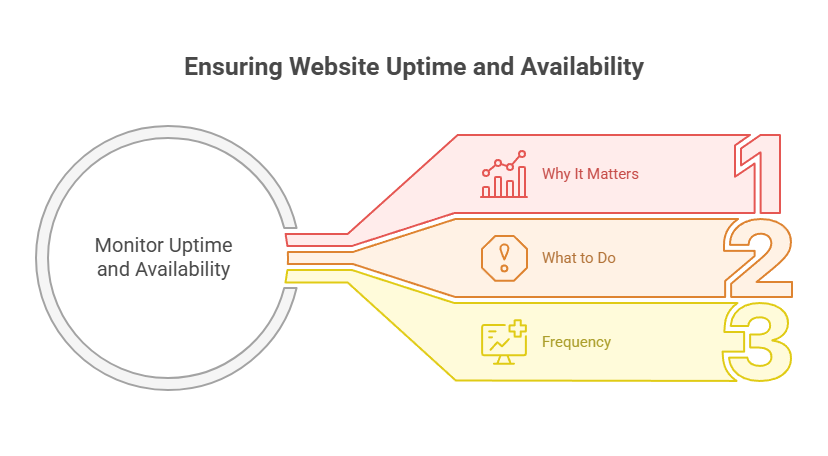
1. Why It Matters
Downtime can have a significant impact on your business, including lost sales, poor user experience, and damage to SEO rankings. Ensuring that your website is always available is key to maintaining trust and avoiding penalties.
2. What to Do
- Uptime Monitoring: Use tools like UptimeRobot or Pingdom to monitor website uptime and availability.
- Alert System: Set up email or SMS alerts to notify you immediately if your website goes down.
- Reliable Hosting: Ensure your hosting provider offers 99.9% uptime with good customer support.
3. Frequency
- Ongoing: Monitor your site’s uptime and ensure high availability.
TaskVirtual: Your Partner in Website Maintenance for 2025
Keeping a business website secure, fast, and user-friendly requires ongoing attention. While a checklist ensures consistency, managing updates, backups, and performance monitoring takes time and expertise. This is where TaskVirtual supports businesses by providing reliable website maintenance virtual assistants who handle the technical and administrative aspects of website maintenance.
1. Expert Guidance on AI-Powered Web Efficiency
TaskVirtual’s team helps businesses implement AI-driven monitoring tools for website security, uptime checks, and SEO optimization. With their consultation, your site stays aligned with the latest digital standards for 2025.
2. Affordable and Scalable Support
With pricing starting as low as $3.12/hour to $14.99/hour, TaskVirtual offers cost-effective solutions compared to in-house staffing. This makes professional website upkeep affordable for startups, SMEs, and large enterprises.
3. Ongoing Updates and Security Checks
Virtual assistants from TaskVirtual can manage routine updates—ranging from CMS patches and plugin upgrades to SSL renewals and security scans—so your website stays protected and compliant.
4. Performance and Content Optimization
Beyond security, TaskVirtual helps optimize website performance by monitoring speed, broken links, mobile responsiveness, and fresh content uploads to ensure the best user experience.
5. Trusted by Businesses Worldwide
With 364 positive reviews and a 4.7-star average rating on leading VA platforms, TaskVirtual is a trusted partner for website management. Their dedicated support ensures your business site runs smoothly throughout 2025 and beyond.
Let TaskVirtual handle the maintenance, so you can focus on growth, customer engagement, and innovation.
Enjoy monthly website maintenance with no hidden charges or strings attached. TaskVirtual ensures your site stays updated, secure, and optimised every month with reliable support.
FAQ
What happens if my website’s performance is still slow after optimization?
The AMC plan includes performance troubleshooting, and the team will continue to optimize elements like images and file sizes for better speed.
2. Do I need to provide all content for updates?
Yes, content like images, text, and videos should be provided by you, though TaskVirtual will handle the updates and maintenance.
3. How do I contact TaskVirtual if I need help?
You can contact TaskVirtual via email or phone. Contact details are available on the website.
4. Can I request custom features in my website?
No, the AMC does not cover the development of custom features. This would need to be arranged separately.
5. Does the AMC cover website hosting services?
No, the AMC does not include website hosting. Hosting is a separate service that must be arranged through a hosting provider.
6. Will TaskVirtual manage SEO as part of the AMC?
SEO services are not included in the AMC. However, website optimization for speed and performance may indirectly improve SEO.
7. Is there a long-term contract for the AMC?
The AMC is on a monthly basis, so there is no long-term contract commitment required.
8. Are updates included for websites with custom themes?
Yes, the AMC plan covers updates and optimizations for websites with custom themes, as long as they are compatible with the existing system.
9. Can I upgrade my AMC plan?
If you require additional services or custom features, you would need to discuss the possibility of an upgrade or additional service plan with TaskVirtual.
10. Are analytics and reporting included in the AMC?
No, analytics and reporting are not part of the AMC. If required, you would need to subscribe to a separate service for these features.
Conclusion
Website maintenance is essential for ensuring that your digital presence remains secure, fast, and relevant in 2025. Regularly updating software, optimizing performance, running security audits, refreshing content, and improving SEO will help you stay ahead of the competition and maintain a strong online reputation. By following this comprehensive website maintenance checklist, you’ll not only enhance user experience but also improve your search engine rankings, drive more traffic, and increase conversions.
By breaking down each task, this checklist ensures that your website remains in top shape year-round, minimizing risks and maximizing performance. Implementing a proactive maintenance strategy will give your business a competitive edge and ensure long-term success in the digital world.








